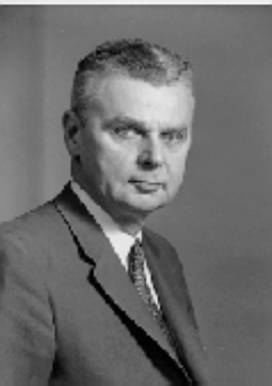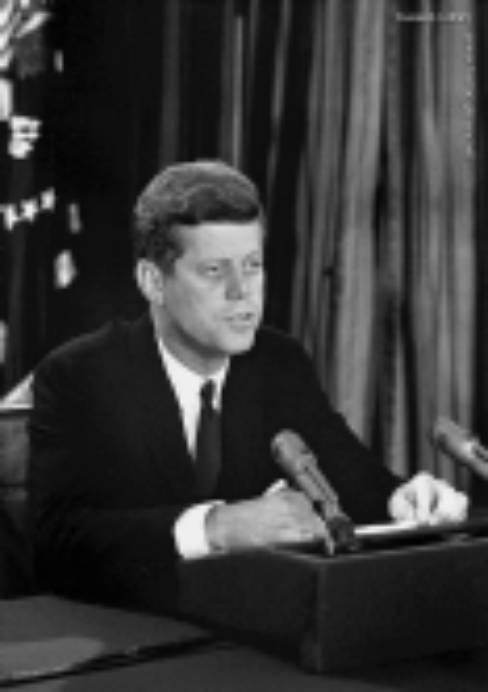 |
Prime Minister John Diefenbaker |
1962-1963, Canada: 'Knocking Over' "Dief the
Chief"
A Plot "Made in the U.S."
By Richard Sanders, coordinator, Coalition to Oppose the Arms Trade.
 |
Prime Minister John Diefenbaker |
In 1962, the U.S. Ambassador to Canada, Livingston Merchant,
and his Second Secretary Charles Kisselyak, fuelled a plot among the Canadian
Air Forces, Canadian journalists and others to dispose of Prime Minister
Diefenbaker.
Kennedy hated Dief largely for his anti-nuclear stance.
Merchant and other U.S. embassy officers with espionage backgrounds, met at
Kissel-yak's home in Ottawa to feed journalists with spaghetti, beer and anti-Diefen-baker/pronuclear
propaganda. Among the many participants in these off-the-record briefings
was Charles Lynch of Southam News. Diefenbaker later denounced these reporters
as "traitors" and "foreign agents." He lashed out
against Lynch on a TV program saying, "You were given briefings as to how
the Canadian government could be attacked on the subject of nuclear
weapons and the failure of the Canadian government to do that which the U.S.
dictated."
Merchant and Kisselyak work-ed with RCAF Wing Commander Bill
Lee and NORAD's number two man, Canadian Air Marshall Roy Slemon. Air
Marshall Hugh Campbell and the chair of Canada's chiefs of staff, Air Marshall
Frank Miller also approved Lee's campaign. Diefenbaker's avidly pronuclear
Defence Minister, Douglas Harkness, also knew of Lee's effort.
As head of RCAF public relations, Lee went to Washington
twice a month to confer with U.S. authorities. "It was a flat-out
campaign," he later said. "We identified key journalists,
business and labour, key Tory hitters, and...Liberals.... We wanted people with
influence on members of cabinet. In the end the pressure paid off."
In 1962, new U.S. ambassador, William Butterworth,
continued the "flat-out campaign" by holding discrete meetings at the
U.S. embassy to exert influence on Canadian journalists.
Lester Pearson was the President's choice. Kennedy gave
the go-ahead to his friend and America's leading pollster, Lou Harris, to become
the Liberal's secret campaign advisor in the 1962 election. Diefenbaker
survived with a minority government.
The plot to bring down Canada's government came to a head in
January, 1963. On Jan.3, top U.S. Air Force General Lauris Norstad held an
Ottawa press conference. Prompted by questions from Lynch, and other
reporters briefed by U.S. intelligence, Norstad criticized Canada's antinuclear
stance. On Jan. 12, Pearson announced his new policy of supporting U.S.
nuclear weapons in Canada. In protest, Pierre Trudeau called Pearson the
"defrocked priest of peace" and refused to run for the Liberals.
| President J.F.Kennedy (during his TV address concerning the “Cuban Missile Crisis” October 1962.) | 
|
The coup's final blow came when the U.S. State Department
issued a press release which called Diefenbaker a liar on nuclear issues (Jan.
30). This tactic was suggested by Willis Armstrong, head of the State
Department's Canada Desk in Washington. Butterworth added his suggestions
and sent his senior embassy advisor, Rufus Smith, to Washington to draft it.
"With Armstrong chairing, half a dozen officials from State, the White
House and the Pentagon...shaped...the rebuke." The draft was polished
by Under Secretary of State George McGhee and approved by acting Secretary of
State, George Ball, and national security advisor, McGeorge Bundy.
The Canadian media had a heyday attacking Diefenbaker. Fights
broke out in Cabinet. Diefenbaker recalled Canada's ambassador from the
U.S. On Feb. 5, Defence Minister Harkness announced his resignation and
Pearson called for a non-confidence vote. Dief's minority government fell,
or rather, it was 'knocked over.'
Kisselyak was the U.S. embassy's contact to Pearson's
election campaign. The Liberals had the strong advantages of a friendly media
and Harris' state-of-the-art, computerized polling tactics. Diefenbaker,
facing a primed hostile media, ran a stridently anti-U.S. campaign.
Pearson's victory was hailed by newspapers across North America. Within
days, the new External Affairs Minister, Paul Martin Sr., was approached by
Butterworth to negotiate the acceptance of U.S. nuclear weapons. The
warheads were deployed in Canada on New Year's Eve and there was partying in
Washington.
Sources: Knowlton Nash, Kennedy and Diefenbaker, 1990 and Floyd Rudmin
"Is the Sky Falling, or What?," Feb. 20, 1995
For more material relating to the US role subverting Canadian democracy, refer
to these excellent articles by Prof. Floyd Rudmin: http://darkwing.uoregon.edu/~ucurrent/uc5/5-rudmin.html
http://www.jdkoftinoff.com/canal70.html
http://www.jdkoftinoff.com/canal57.html
http://www.jdkoftinoff.com/canal79.html